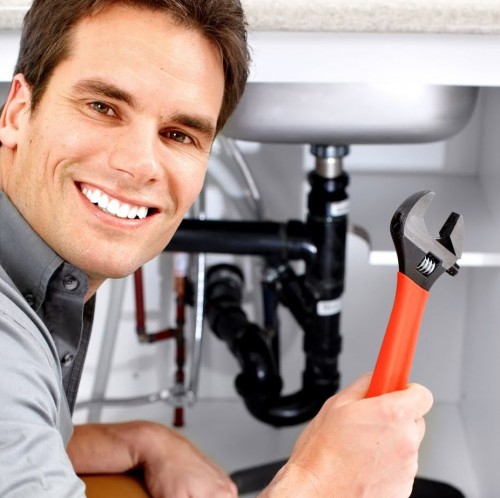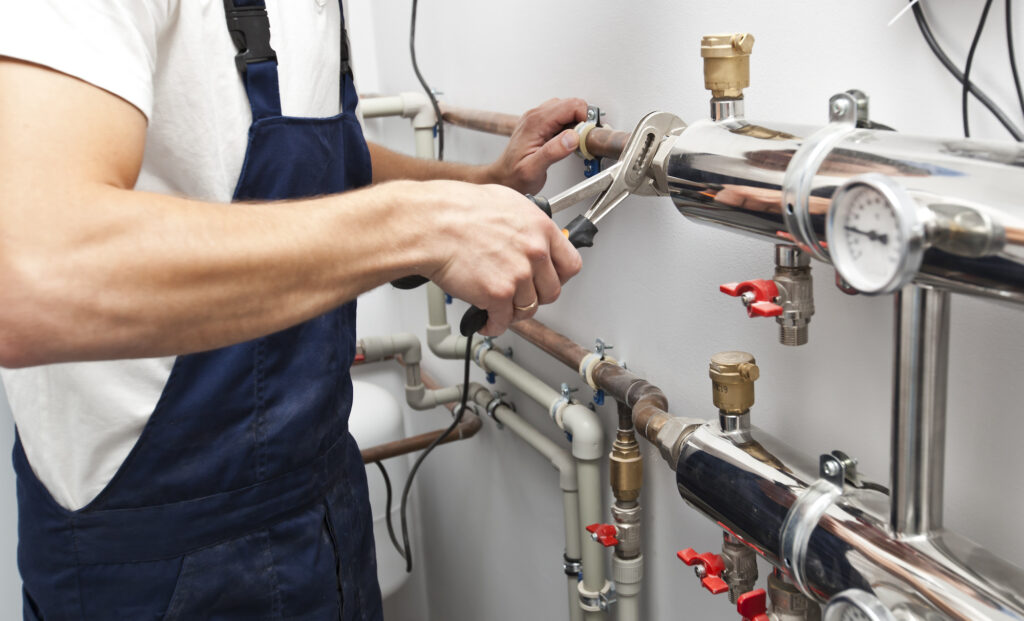Delving into Home Plumbing Basics: A Beginner's Tutorial
Delving into Home Plumbing Basics: A Beginner's Tutorial
Blog Article
On this page further down yow will discover a bunch of really good insight with regards to How Does the Plumbing Work in Your Home?.

Plumbing is a vital element of any kind of home, responsible for supplying tidy water for drinking, cooking, and bathing, along with removing wastewater securely. Comprehending the fundamentals of home plumbing is necessary for every single homeowner to make sure appropriate maintenance, troubleshooting, and, if necessary, repairs. In this newbie's overview, we'll cover the basic concepts of home plumbing to assist you become extra acquainted with how it works.
Water Furnace
The water heating unit is in charge of home heating water for domestic use, consisting of bathing, cooking, and cleansing. Typical sorts of water heaters include tank-type water heaters, tankless (on-demand) water heaters, and heat pump water heaters. The hot water heater is attached to the water system and supplies warm water to plumbing fixtures as required.
Water drainage System
The water drainage system eliminates wastewater from your home and carries it away to a sewer therapy center or septic tank. It includes a network of pipelines, installations, and components that deliver wastewater from plumbing fixtures to the primary sewer line or septic system. Appropriate water drainage is important to prevent clogs, backups, and sewer leaks.
Ventilation System
The ventilation system helps keep correct air pressure and avoid sewer gases from entering your home. Air vent pipelines, likewise referred to as air vent heaps, expand from plumbing components to the roofing system, permitting sewage system gases to escape securely outside. Air flow pipes likewise allow air to enter the drainage system, assisting in smooth wastewater flow and preventing suction or vacuum impacts.
Supply Of Water System
The supply of water system brings tidy water into your home from a community water source or a personal well. It consists of a primary water line that links to your home's plumbing system, normally situated underground. A water meter determines the amount of water eaten, while a shut-off shutoff allows you to regulate the flow of water into your home.
Plumbing Fixtures
Plumbing fixtures are devices that deliver water to different parts of your home and consist of sinks, taps, toilets, showers, tubs, and appliances such as dishwashing machines and cleaning equipments. Each component is attached to the water supply system through pipes and fittings and might have its shut-off valve for upkeep or emergency situations.
Common Plumbing Devices
Having the right devices handy is crucial for executing standard plumbing repair services and maintenance tasks. Common plumbing tools include flexible wrenches, monkey wrench, pliers, pipeline cutters, hacksaws, bettors, augers (or drain serpents), and Teflon tape. Having these tools easily available can assist you tackle minor plumbing concerns successfully.
Fundamental Plumbing Repairs
While some plumbing repair work may call for expert help, lots of typical problems can be resolved with standard do it yourself methods. Discovering how to fix a leaking faucet, unblock a drainpipe, replace a toilet flapper, or repair a dripping showerhead can save you time and money on plumbing fixings.
Final thought
Comprehending the basics of home plumbing is crucial for every home owner to keep a safe, practical, and efficient plumbing system. By familiarizing yourself with the supply of water system, plumbing components, water drainage system, air flow system, usual plumbing devices, and basic repair services, you can with confidence address minor plumbing concerns and ensure your home's plumbing system operates smoothly.
Plumbing for Beginners: A Comprehensive Guide
If you’re a beginner when it comes to plumbing, don’t worry; you’re not alone. Plumbing may seem intimidating, but with the right knowledge and a little practice, you can handle many common plumbing issues on your own. In this comprehensive guide, we will demystify the world of plumbing for beginners, providing you with the basic knowledge and skills needed to tackle common plumbing problems and even take on some DIY plumbing projects.
The Importance of Basic Plumbing Knowledge for Beginners:
First and foremost, basic plumbing knowledge gives you a solid foundation. It helps you grasp the key concepts and terminology that are essential in this field. By learning the basics, you’ll be able to build upon that knowledge and tackle more complex plumbing tasks in the future.
Having a basic understanding of plumbing also enables you to handle common issues that may arise in your home. Picture this: a leaky faucet or a clogged drain. With some basic plumbing knowledge, you’ll have the confidence to troubleshoot and fix these problems on your own. It saves you from unnecessary expenses and the hassle of waiting for a professional to arrive.
As a beginner, learning the basics of plumbing empowers you to take care of your own home. It gives you a sense of independence and self-reliance. You’ll no longer have to rely solely on professionals for every small issue that pops up. Instead, you can handle many tasks yourself, saving time and money in the process.
Remember, everyone starts as a beginner. Embrace the learning process and take small steps to expand your plumbing knowledge. There are plenty of online resources, tutorials, and even local workshops that talk about plumbing for beginners.
Essential Tools for Plumbing for Beginners
As you start your plumbing journey, having the right tools in your toolbox is crucial. Let’s explore some of the must-have tools:
Adjustable Wrench:
This versatile tool is a staple in any plumber’s toolbox. It allows you to tighten or loosen nuts and bolts of various sizes. Make sure to have an adjustable wrench with a comfortable grip.
Pipe Wrench:
A pipe wrench is specifically designed for gripping and turning pipes. It has serrated jaws that provide a strong grip, making it easier to loosen or tighten threaded pipes and fittings.
Plunger:
The plunger is a simple yet effective tool for clearing clogged drains and toilets. It creates suction when you push and pull, helping to dislodge blockages. Keep a good-quality plunger handy for those unexpected clogs.
Pipe Cutter:
When it comes to cutting pipes, a pipe cutter is your go-to tool. It creates clean, precise cuts without damaging the pipe. Look for a pipe cutter that can handle the pipe sizes you’re working with.
Hacksaw:
A hacksaw is useful for cutting through pipes, screws, and other materials. It’s a versatile tool that can handle different cutting tasks. Remember to use a blade suitable for cutting metal.
Tape Measure:
Accurate measurements are crucial in plumbing. A tape measure allows you to measure pipe lengths, distances, and dimensions accurately. Opt for a sturdy tape measure that extends a good length.
Pliers:
Pliers come in handy for various tasks, such as gripping, bending, and cutting. Slip-joint pliers with adjustable jaws are great for gripping pipes, nuts, and bolts.

Do you really like reading about Plumbing Basics For Every Home: The HomeTriangle Guide? Give feedback below. We will be pleased to find out your suggestions about this page. We hope to see you back again before long. Enjoyed reading our posting? Please quickly share it. Let another person locate it. Kudos for being here. Revisit us soon.
View Website Report this page